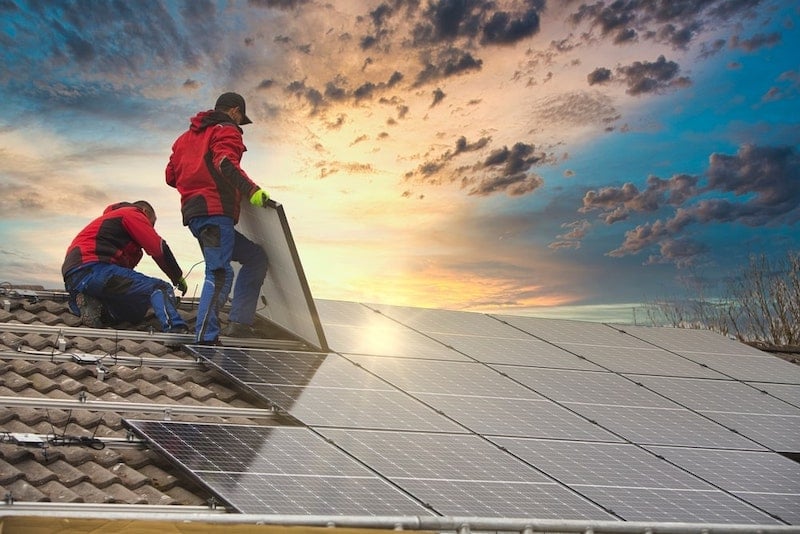
Solar panels are generally very reliable for charging electric vehicles at home. Solar panels can help bring down utility bills as well as your carbon footprint – allowing you to recharge your electric car using 100% free, renewable energy.
Solar panels are weather-tested to a high quality and tend to last anywhere between 25 and 40 years before repair or replacement becomes necessary. Since the lifespan of an average car is about 12 years, your home solar panels could theoretically recharge the next two to four electric cars you’ll own.
The ‘rate of degradation’ in the solar industry is the speed at which panels are expected to lose efficiency and power over time. Thankfully, quality modern solar arrays have extremely low degradation rates: just 0.2% to 0.3% per year. Even at a more conservative degradation rate of 0.5%, the average panel would still be operating at 87.5% power after 25 years of use.
The main factors that impact the reliability of solar panel technology and efficiencies over time are the quality of solar panel manufacturing and the installation, maintenance, the amount of sunshine they're exposed to, and adverse weather conditions.
Table of contents
Let’s shine some light on reliability
Residential solar EV charging offers a free, carbon-neutral way to charge our electric vehicles, making it especially popular among the home-owning electric mobility community. Solar panels installed on our roofs and around our property generate 100% green energy using the power of the sun, which we can then use to power our homes and recharge our EVs.
Indeed, owing to the growing popularity of solar power as a desirably eco-friendly EV charging solution, some estimates suggest that the lucrative solar EV charging market is set to grow at a healthy 8.1% between now and 2031. As the market grows, the solar technology available to homeowners will likely continue improving and become more affordable.
Still, the question remains: Just how reliable are solar panels for charging EVs?
After all, we don’t all live in places where sunlight is plentiful. Do solar panels still work on cloudy days? Is solar energy reliable for EV charging? And how long do solar panels last?
This article seeks to answer these questions and more so that you can charge your car with confidence.
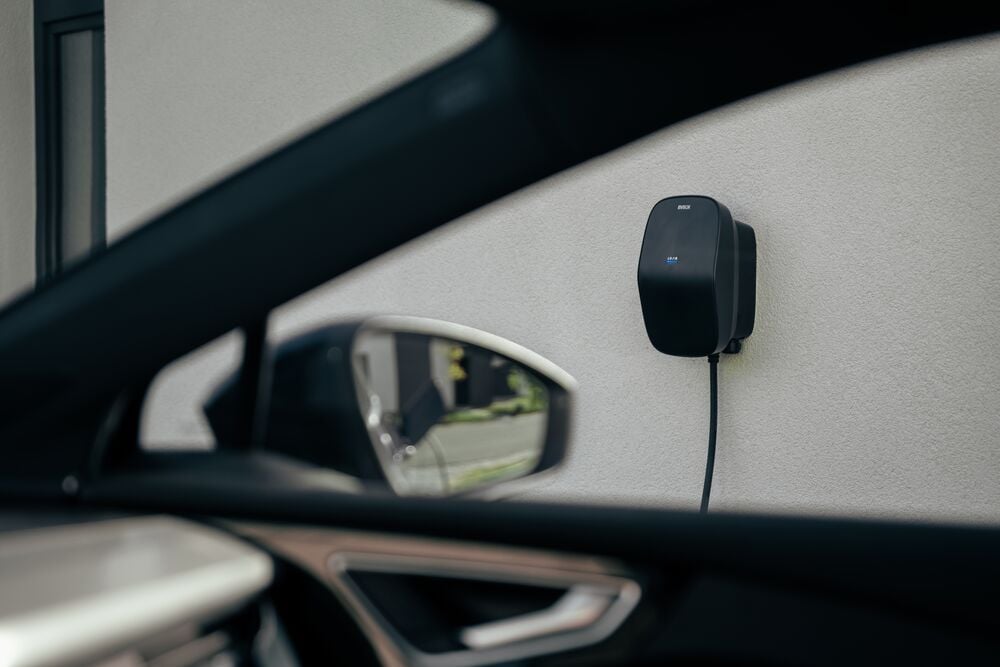
Testing how reliable solar panel technology is for EV home charging
There are several factors that affect how reliable solar panels are for recharging electric vehicles. In this section, we examine the technology of the panels themselves.
Solar panel lifespan
Thanks to a lack of moving parts and the relative simplicity of the technology behind solar panels, they tend to have long lifespans. In fact, the average modern solar panel will last for at least 25 years before a loss in performance becomes noticeable. Excellent news if you want to rely on solar power to keep your electric car on the road for the foreseeable future. Depending on the solar panel manufacturer, as well as the type and quality of solar panels your system could even last for 40 years or more.
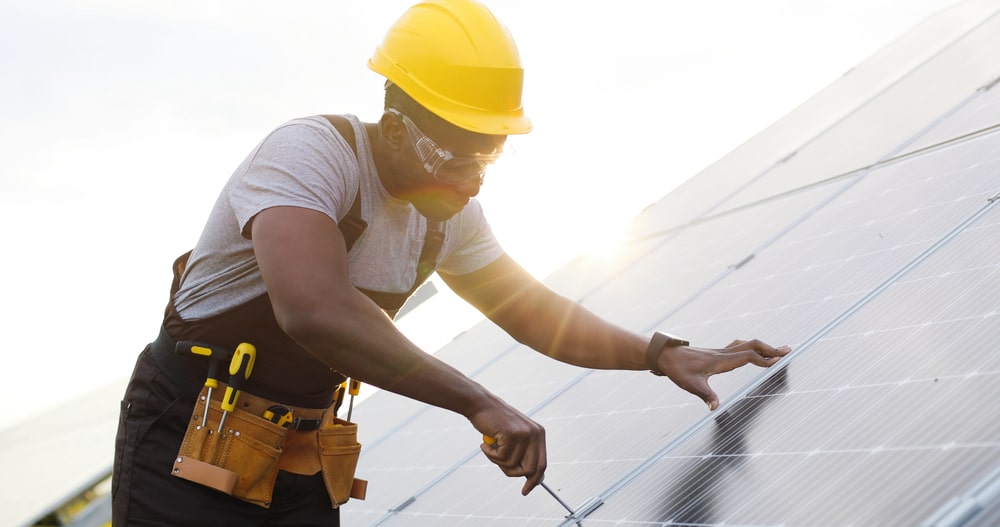
The longevity of photovoltaic (PV) arrays, as solar panel systems are also known, is one of the major factors driving solar adoption, both within and without the EV-driving community. Knowing that your rooftop array will still be generating free electricity up to four decades after installation offers plenty of time to see a healthy return on your solar investment.
For comparison, consider that the components in your electric car are typically expected to last anywhere between 10 and 20 years, or 100,000-200,000 miles; a very similar lifespan to traditional petrol and diesel cars. In this context, a new solar panel home charging system could realistically outlast four full lifespans of the average electric car.

Five factors causing solar panel degradation over time
Over time, solar panels become less efficient, producing less renewable electricity for recharging your car compared to when they were brand new. This will probably come as no surprise. For example, most of us are quite used to performance degradation in our smartphones, whose battery life and operating speeds noticeably fall off after just a year or two of use.
The ‘rate of degradation’ in the solar industry is the speed at which panels are expected to lose efficiency and power over time. Thankfully, quality modern solar arrays have extremely low degradation rates: just 0.2% to 0.3% per year. Even at a more conservative degradation rate of 0.5%, the average panel would still be operating at 87.5% power after 25 years of use.
Below, we examine five common factors contributing to the degradation of solar panel technology. Knowing these, you can plan when installing your own solar EV charging system to minimize loss of power over time.
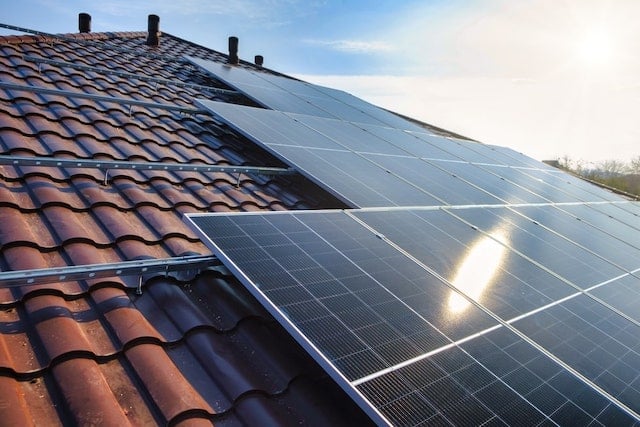
1) Dust and debris build-up
You’d be surprised by just how huge an impact the build-up of dust and debris can have on the ability of your solar panels to convert sunlight into consumable electricity. The simplest way to reduce the effects of dust build-up is to periodically clean your panels and to ensure that they are installed at an angle, rather than flat.
2) Broken glass
Glass breakage is one of the less common causes of solar panel degradation, caused on rare occasions by extreme weather conditions such as hail and heavy snow, but also occasionally by wildlife. Whilst it’s not possible to avoid the elements, routine maintenance checks will help you to identify any breakages that do occur sooner and arrange for prompt repair thus keeping your array working optimally.
3) Electrical failure of the junction box
The most complex parts of a solar panel array are rarely the solar panels themselves. Instead, it’s the wiring, the charge controllers, the inverter(s), and the junction box that can cause you more problems in the long run. Most of these components will come with their own separate warranties – somewhere in the region of 10-15 years – and should be your first port of call if you notice an unexpected loss of power or efficiency.
4) Climate and weather
Solar panels turn sunlight into electricity for you to recharge your EV with, and so the weather and climate in your area play a huge role in both the efficiency and lifespan of your panels. For example, hot climates degrade solar panels faster than cool ones, since heat breaks down the conductive materials in the panels faster than cold. Other weather patterns to watch out for include hail, snow, high winds, storms, and high humidity. Any of these in abundance is likely to negatively affect your solar panels’ lifespan.
5) Poor installation
Lastly, it’s worth noting that the quality of installation matters greatly. You should only ever look to work with accredited solar contractors with a tried-and-tested track record of residential solar panel installations. Poor wiring, angling, or mounting during installation can put your solar array on the backfoot from the get-go.
Solar panel warranties
Different solar panel manufacturers will offer different warranties for their solar panels, the particulars of which may depend upon factors such as your location. The longer the basic product warranty is offered for your panels, the more peace of mind you'll have. You should ideally be looking for panels with a warranty of 25+ years.
How reliable are solar panels in different weather conditions?
How reliable your solar panels are for charging your EV depends not only on the technology of the panels and home EV charging system but also depends greatly on the weather.
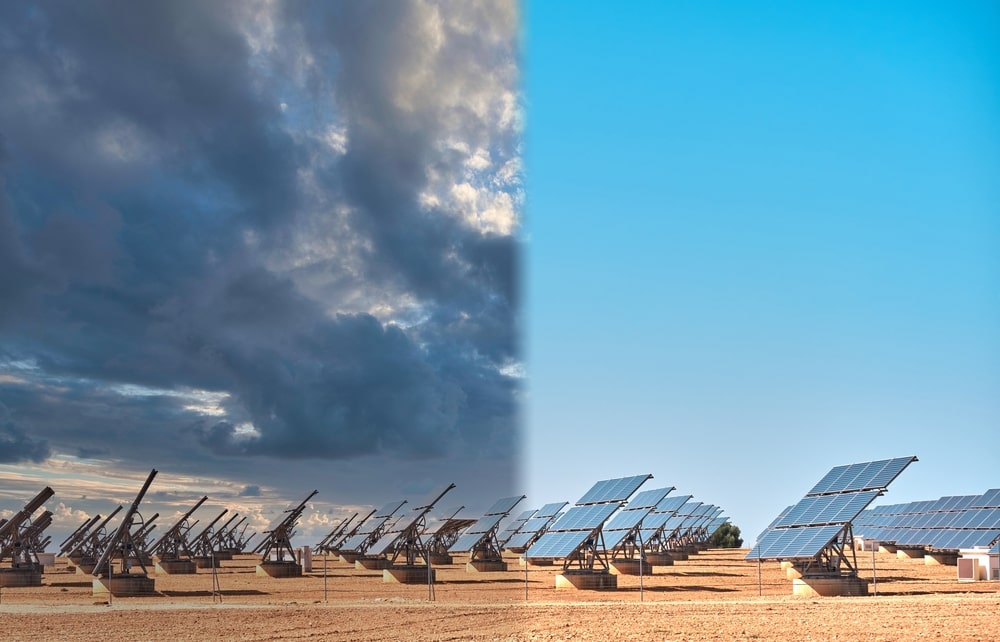
Sunny days
Solar panels produce electricity when sunlight hits the reactive materials contained within their cells. Naturally, the more direct and consistent the sunlight, the more reliably your PV array will generate free electricity for you to recharge your car with. A good way to work out how much electricity solar panels on your roof could produce is first to determine the average daily sunlight hours your house is exposed to. The more, the better.
If you live in a particularly sunny part of the world, you may find yourself in the enviable position of producing more solar electricity daily than you can feasibly use. Alternatively, you may need to stockpile whatever amount of electricity your panels generate so as to use it at more convenient times, such as in the evening. In either situation, you can improve how reliable your solar panels are for car charging by installing a battery storage system.
Battery storage systems store excess solar energy and can be linked to your home or directly with your home EV charger, allowing you to use the electricity from your panels whenever suits you, rather than only when the panels are actively generating.
Cloudy days
There is a common misconception that solar panels don’t work on cloudy days. This isn’t true. Solar panels still work just fine when exposed to diffuse light (indirect sunlight); the difference is that they will only be able to produce a fraction of the energy they would on a bright and sunny day – perhaps as little as a quarter of their potential.
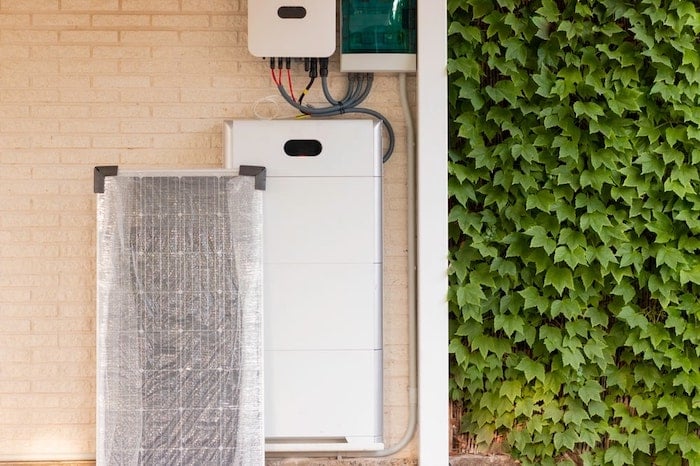
Combatting cloudy days for solar EV charging
EV drivers can squeeze the most out of their solar EV charging systems, even in overcast weather, by installing additional technologies such as smart charge controllers, solar trackers, and battery storage units. By optimizing your system, you can still reliably recharge your EV, even when the clouds roll in.
- Charge controllers: Smart charge controllers ensure each solar panel is operating at peak performance according to the conditions, whilst also minimizing loss of electricity during conversion and supply to your EV home charging port.
- Solar trackers: Solar panels mounted on solar trackers will rotate and reangle throughout the day to follow the sun, thus maximizing each panel’s potential regardless of cloud cover.
- Battery storage: As previously discussed, storing excess solar electricity from sunny days in batteries can make your EV charging system more reliable on cloudy days.
Rain and extreme weather
Solar panels spend their entire lifetimes outside, exposed to whatever weather conditions are thrown their way. As such, reputable manufacturers weather-test their panels before sale, usually to extremely high standards.

Weatherproofing requires solar panels to have a high waterproof rating, as well as seals around ports and wiring points to protect them from dust and debris ingress. It also includes strength tests against things like snow and hail. Whilst rain and extreme weather may reduce the efficiency of your panels temporarily, most panels will not be permanently affected by extreme weather.
Solar panel EV-charging speeds over time
Knowing that solar panels are weather-resistant, long-lasting, and a truly reliable part of home EV-charging systems, the only question left to answer is: How are solar EV charging speeds affected over time? After all, when charging our electric cars at home we all want consistency: the comfort of knowing that your EV battery will be replenished from the daily commute in a certain amount of time.
Provided you take good care of your panels, buy a quality array, and ensure it is installed carefully, you can expect your system to last for at least 25 years, with degradation rates as low as 0.2%. Using this as our example, a solar array installed in 2023 would still be operating at 95% of its maximum potential power come the year 2048.

Given that the average solar panel array can recharge an EV’s average daily battery usage in around just 2 hours 49 minutes, then after 25 years of use you could still expect this array to be delivering a charging time of 2 hours 40 minutes: less than 10 minutes slower.
Even solar panels with worse degradation rates of, let’s say, 0.8%, would only lose 20% power after 25 years. The same charging time of 2 hours 40 minutes would therefore stretch to 3 hours 11 minutes. Thus, 25 years after installing your solar EV charging array, your electric car would take only half an hour longer to recharge via solar power than it did when you first installed the system – arguably a small price to pay for free green energy.
Conclusion: How reliable are solar panels for EV charging?
Even over long periods of time, in both sunny and cloudy conditions as well as through occasional extreme weather, solar panels are undeniably reliable for home EV charging. Producing 100% free, 100% renewable energy from sunlight alone, a residential rooftop solar array can reliably recharge the average EV day in and day out.
The average modern, good-quality solar panel should last for at least 25 years, with some brands recording lifespans more than 40. Degradation rates – the rates at which PV panels lose efficiency and power – are far lower than is found in other everyday technologies like your mobile phone. Most modern panels degrade at rates of just 0.2-0.3%, recharging your vehicle at much the same speeds 25 years down the line than they would fresh out of the box.
Installing solar panels for solar EV charging is not something that should be undertaken lightly. The initial investment in residential solar, whilst dropping in price year-on-year, is still significant. However, with care and consideration put into the planning stages, most EV drivers can seriously benefit from the reliability of home solar EV-charging setups.
To learn more about home solar EV charging and how to charge your EV at home, visit the EVBox blog.
Related articles

Smart Charging for Solar EV Systems: What is possible today?
There are a variety of smart solutions available, capable of optimizing your solar EV charging system in different...

Can solar EV charging save you money?
Charging your EV using household solar panels can indeed save you money on your utility bills. How much money solar EV...
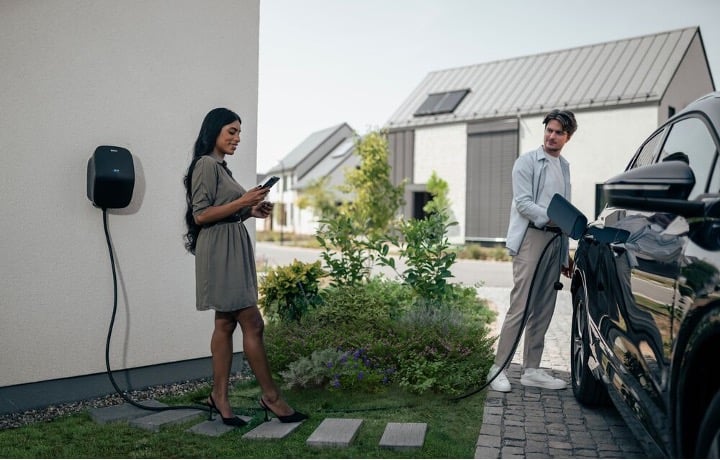
How to optimize your solar set-up for charging electric cars at home
There are several ways EV drivers can optimize a homegrown solar system to ensure their EV recharging needs are met....
